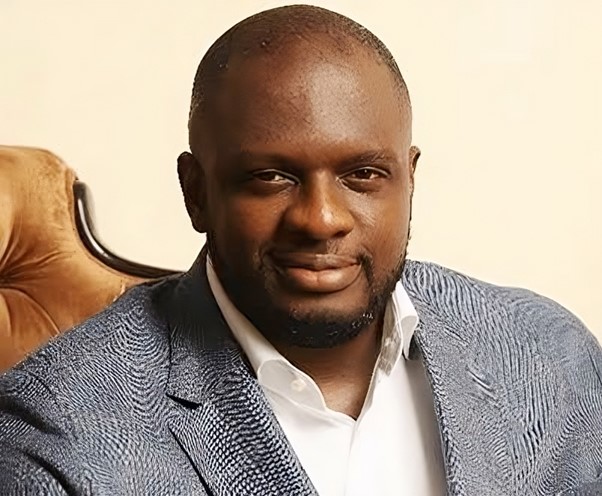In recent times, technology has transformed how we conduct daily activities across businesses and households, and the creative industry has been no exception.
A study by Adobe found that 70% of creative professionals worry that AI could make their jobs obsolete while 63% also believe it can enhance their creativity.
With the rise of AI and an abundance of free tech tools on the internet, processes that would otherwise be complicated have become immensely simplified.
Research, ideation, analytics, reporting, and even technical creation processes are now as easy as finding the right tools, imputing the right prompts, and getting the results in a matter of seconds.
As much as the ease that comes with the rise of these tech tools is very welcome, it raises the question, ‘How do we avoid laxity and laziness while depending on these tools for increased efficiency?’
I have observed that AI-powered tools can potentially weaken the ability to think critically. While automating routine tasks can save time and increase efficiency, it can also reduce our problem-solving and decision-making skills, thereby hindering our ability to think creatively and independently.
Imagine a team of designers tasked with creating innovative packaging for a new eco-friendly water bottle. They might have previously brainstormed, sketched, and prototyped their ideas by hand, experimenting with different shapes, materials, and functionalities.
This hands-on process would have naturally forced them to consider various constraints, think creatively about solutions, and make decisions based on their understanding of the materials and manufacturing processes.
Now, with sophisticated design software that can automate tasks like generating 3D models, performing stress simulations, and creating realistic renders, it can also subtly shift the team’s approach.
They might rely heavily on pre-existing templates and functionalities instead of pushing their creative boundaries. They could easily fall into the trap of optimising parameters within the software’s limitations rather than challenging those limitations and exploring entirely new avenues.
For example, Amper Music and Jukebox can spark inspiration and help generate initial melodies or harmonies, providing composers with a springboard for their creativity, Autodesk Fusion 360 can optimise designs for strength, manufacturability, and even aesthetics, assisting designers in iterating and refining their ideas faster, AI tools can analyse vast amounts of data to identify target audiences, predict trends, and personalise ad campaigns, boosting the effectiveness of creative marketing efforts, writing assistants like Grammarly and Jasper can suggest word choices, grammar corrections, and even generate basic content outlines, streamlining the writing process and overcoming writer’s block.
Since everyone has access to the same tools and pre-built templates, creative outputs can become formulaic and lack originality.
Some forms of AI-generated art or writing can feel sterile and devoid of nuance and emotional depth that comes from human expression.
On top of that, there is the ethical question of copyright and creative rights as who owns these rights for AI-generated work is unclear and can potentially lead to legal dilemmas.
In the same vein, this technology democratises creative tools and resources, making them accessible to more users regardless of geographical or financial limitations. This gives a better chance for previously untapped talent to emerge in the creative landscape.
We must ensure that while these tools are adopted for their efficiency and ability to produce greater output, they don’t take away or dull our focus on creativity, skill, and critical thinking as professionals.
Instead, these factors, at this point, demand more focus to prove mastery in an industry where everyone has access to the same tools. Creating the right balance is hinged on two things essentially; intentionality, and a human-centered approach to projects.
Automation is not without its pitfalls and limitations, the best approach is to define the creative outcomes first, before employing tech tools to support the process.
This way, you are not stuck with the tool’s limitations, or reliant on artificial intelligence for creative thinking and critical analysis. It helps to set boundaries between automated tasks and those requiring human judgment, reflection, and independent thought. Choose tools that enhance specific aspects of your process, not replace your own vision.
It is important for us to prioritise brainstorming, experimenting, and exploring ideas outside the digital realm. This would fuel improvisation, divergent thinking, and problem-solving skills.
We must not be afraid to push the boundaries of technology, explore its limitations, and find innovative ways to adapt it to our creative vision.
Exposing ourselves to various viewpoints, disciplines, and art forms, will also expand our creative horizon and inspire unconventional solutions.
We must continuously evaluate the outputs generated by tech tools, question their assumptions, and consider alternative solutions informed by our critical thinking.
Understanding that the tools don’t necessarily do the work better but are at our disposal to improve efficiency would guide us in our utilisation of them to accentuate our work processes. The tools are augmenters and collaborators, not replacements for our ingenuity.
In conclusion, the key to cultivating creativity and critical thinking in a tech-driven world is to approach technology with purpose, actively engage in creative exploration, and maintain a critical mindset to ensure tech empowers, rather than hinders, your true creative potential.
In the evolution of the relationship between technology and human creativity, AI should become even more deeply integrated into creative workflows not as a separate tool but as a co-creator instead.
We might see entirely new art forms and modes of creative expression born out of the fusion between human intelligence and AI.
However, regardless of how advanced AI becomes, human imagination, critical thinking, and emotional intelligence will remain the driving forces behind true creativity, and the future lies in harnessing the power of technology while never losing sight of our capacity to dream, connect, and express ourselves.
Oluwole Asalu is a founder, serial entrepreneur, and technology specialist writing from Lagos, Nigeria.






Comments 1